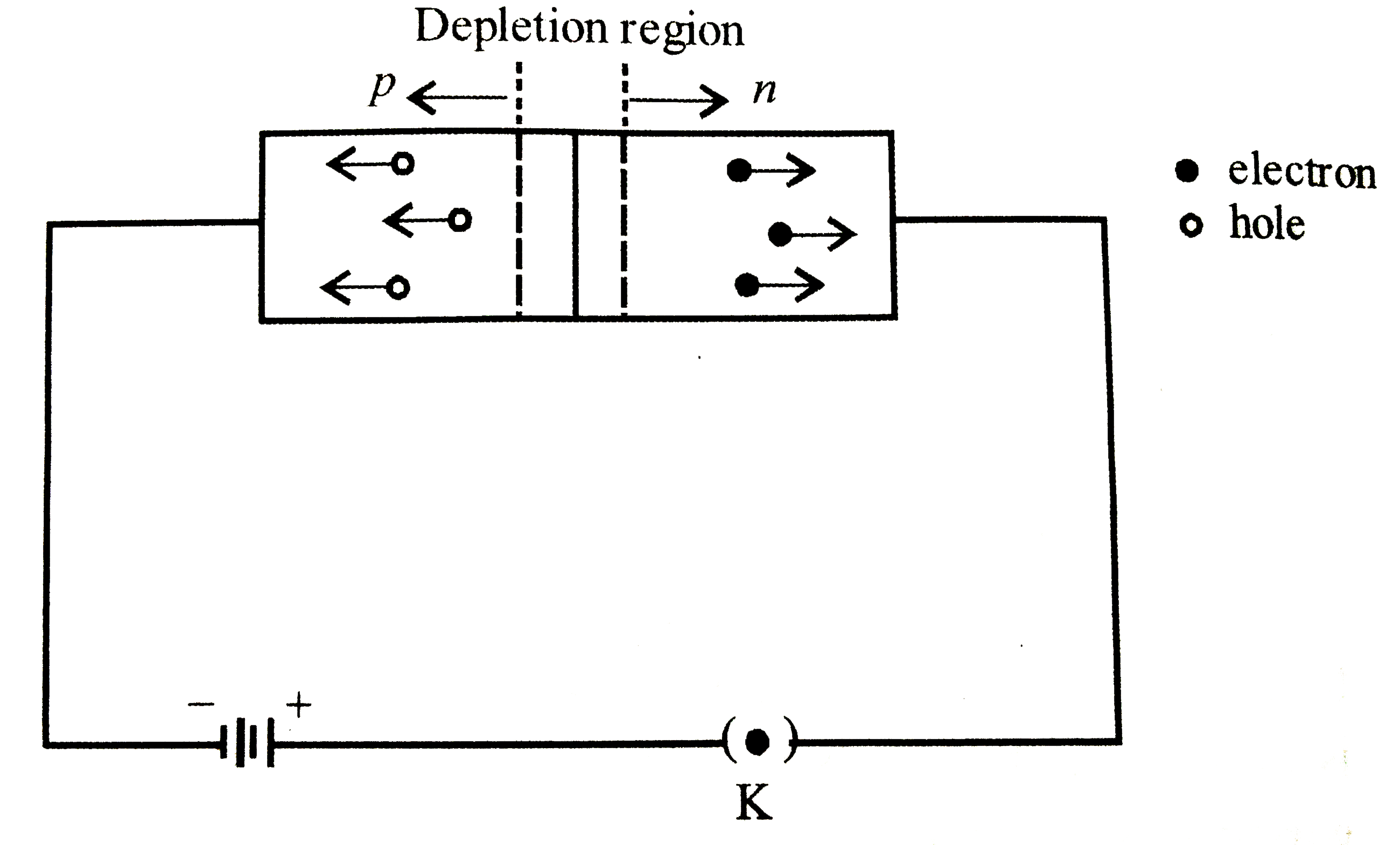Explain the working of p-n junction diode in forward and reverse biased mode.
Video Solution
Text Solution
Forward-biased p-n junction diode :
A p-n junction diode is said to be forward biased when the positive terminal of a cell or battery is connected to the p side of the junction and the negative terminal to the n side.

When the junction is forward-biased, the depletion region narrows and, consequently, the potential barrier is lowered. This causes the majority charge carriers of each region to cross into the other region. The elecrons travel from the n-side to the p-side and go to the positive terminal of the battery. The holes that travel from the p-side to the n side combine with the electrons injected into the n-region from the negative terminal of the battery. This way the diode conducts when forward-biased. The forward current may be few milliamperes.
Reverse-biased pn junction diode
A pn-junction diode is said to be reverse biased when the positive terminal of a cell or battery is connected to the n side of the junction, and the negative terminal ot the p side.

With reverse bias, free electrons and holes move away from the junction. The departure of holes and electrons increases width of depletion layer and barrier potential. As there is no crossing of majority carriers across the junction, there is no current through reverse biased diode. A very small current flows because of thermally produced minority carriers in depletion region. Thus, the reverse biased diode works as an open switch.
|
Topper's Solved these Questions
Similar Questions
Knowledge Check
For making p-n junction diode forward biased:
Asame potential is appliedBgreater potential is given to n compared to pCgreater potential is given to p compared to nDunbalanced concentrationWhen p−n junction diode is forward biased then
Athe depletion region is reduced and barrier height is increasedBthe depletion region is widened and barrier height is reducedCboth the depletion region and barrier height are reducedDboth the depletion region and barrier height are increasedWhen p−n junction diode is forward biased then
Athe depletion region is reduced and barrier height is increased.Bthe depletion region is widened and barrier height is reduced.Cboth the depletion region and barrier height are reduced.Dboth the depletion region and barrier height are increased.
What happens to the width of depletion layer of a p-n junction when it is () forward biased, (i) reverse biased ?
View SolutionWhen p−n junction diode is forward biased then
View SolutionOn adjusting the P−N junction diode in forward biased
View SolutionWhen a p-n junction diode is reverse biased
View SolutionA p−n junction diode is reverse biased. Then
View Solution

